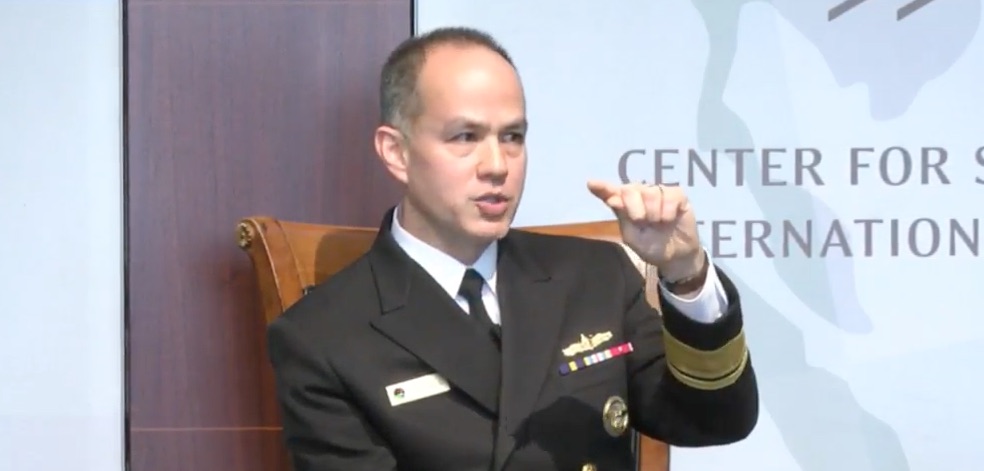
RAdm. Jon Hill, deputy director of the Missile Defense Agency, speaks at the Center for Strategic and International Studies in Washington, D.C., on Dec. 13, 2017. Screenshot photo from CSIS video.
US and NATO allies recently demonstrated their ability to operate collaborative missile defense during an exercise, Formidable Shield 17, held off the coast of Scotland. The exercise brought together eight nations, 14 naval ships, and 3,300 personnel, RAdm. Jon Hill, deputy director of the Missile Defense Agency, said at a Center for Strategic and International Studies event in Washington, D.C., Wednesday.
Formidable Shield was important because “the ballistic threats are becoming more and more complex over time,” Hill told the audience. “There are now capabilities that can…do a range extension in space, which means it’s really no longer ballistic.” The ability of such missiles to “maneuver” after their ballistic phase marks “a different kind of threat…from what we’ve dealt with historically,” he said.
As threats like this grow more dynamic, “integrated air missile defense” becomes more crucial, Hill said, and at Formidable Shield “we were trying out a lot of new things” in this area. A number of scenarios pressed the assets involved to share data in new ways. “All the ships, regardless of their combat systems, were either tracking and passing data to each other, or we were engaging and operating together,” Hill said.
In the end, the allies demonstrated exactly the kind of missile defense required by the newest technology. “We were doing both air defense and ballistic missiles at the same time,” Hill said.
One takeaway from the exercise, however, is that “we have to continue to improve the ballistic missile defense system” in a comprehensive way, Hill said. “It’s not just about buying more missiles and interceptors.”
To help the US keep up with future threats, MDA needs to ensure its “radars are sustainable,” and it needs to “have the engineering force in place to work those really difficult, complex discrimination problems.” It also needs to get “the high-end interceptors down at a lower price,” Hill said.